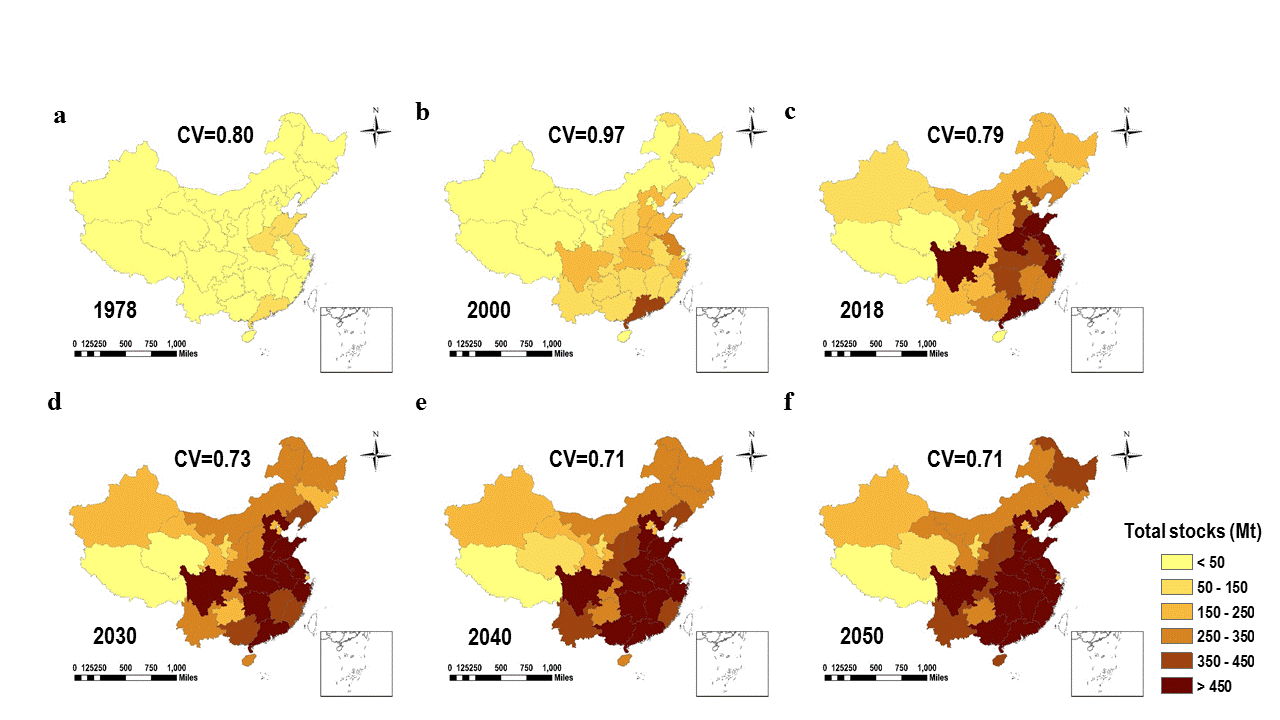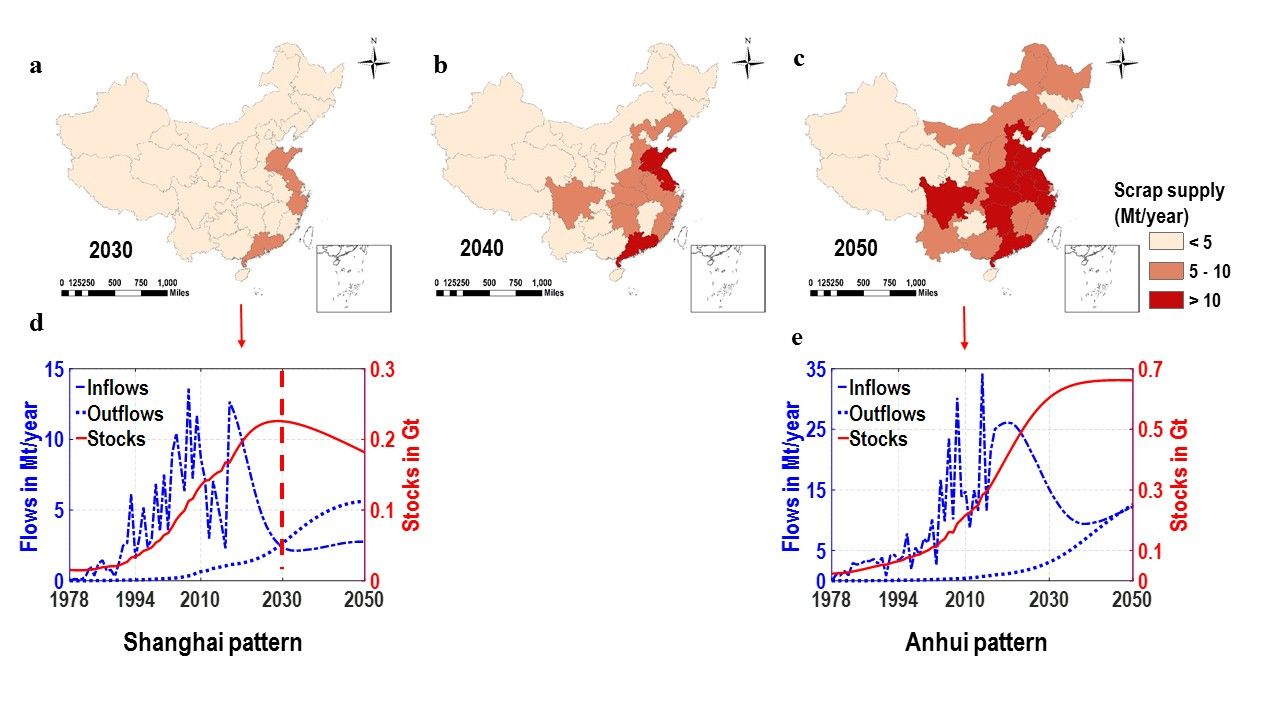Song, Lulu; Wang, Peng*; Hao, Min; Dai, Min; Xiang, Keying; Li, Nan; Chen, Wei-Qiang*
Journal of Cleaner Production 2020 262, 121393. DOI: 10.1016/j.jclepro.2020.121393
Abstract
China’s unprecedented industrialization and urbanization has boosted tremendous steel use nationwide, making it the global largest steel producer and consumer. However, there is a limited knowledge on the historical evolution and future transitions of China’s provincial steel use, which prohibits more specific resource management policies. We applied dynamic material flow analysis to estimate and predict the provincial steel stocks and flows during 1978-2050 in 31 provinces of mainland China, with a bottom-up data collection on over 100 categories of steel-containing products. We find steel stocks have reached 5.9 ± 1.5 tons per capita (t/cap) in 2018, and identify a significant gradient decline of steel stocks from eastern coastal regions to western inland regions. By 2050, steel stocks will be around 12.3 Gt, ranging from 9.3 Gt to 15.3 Gt. It is expected that the regional disparity of steel stocks will be narrowed in the near future. Our spatial analysis reveals the coming steel demand peak occurring during 2016-2022 and scrap boom after 2030. However, such patterns differ among provinces. The scrap in some eastern provinces will exceed demand around 2030, while central and western provinces will become larger suppliers of scrapped steel after 2040. China should tailor its circular economy policies to local and inter-regional levels to boost inter-regional scrap circulation for more sustainable and balanced development.
Spatial distribution of provincial steel stocks during 1978-2050.

Spatial distribution of provincial steel scrap for the baseline scenario in 2030 (a), 2040 (b), 2050 (c), and stocks, demand (inflows), and scrap (outflows) during 1978e2050 of Shanghai pattern (d) and Anhui pattern (e).
